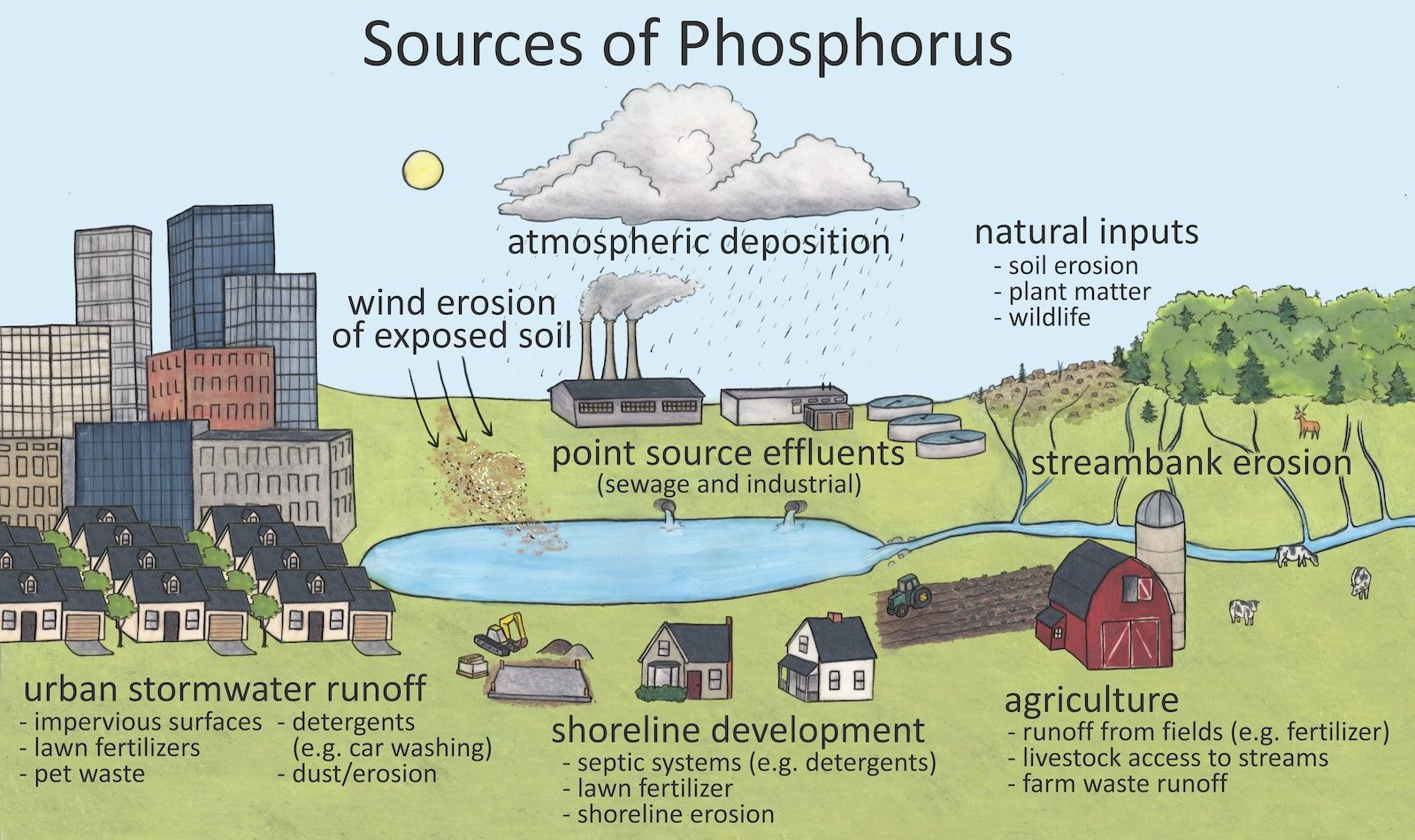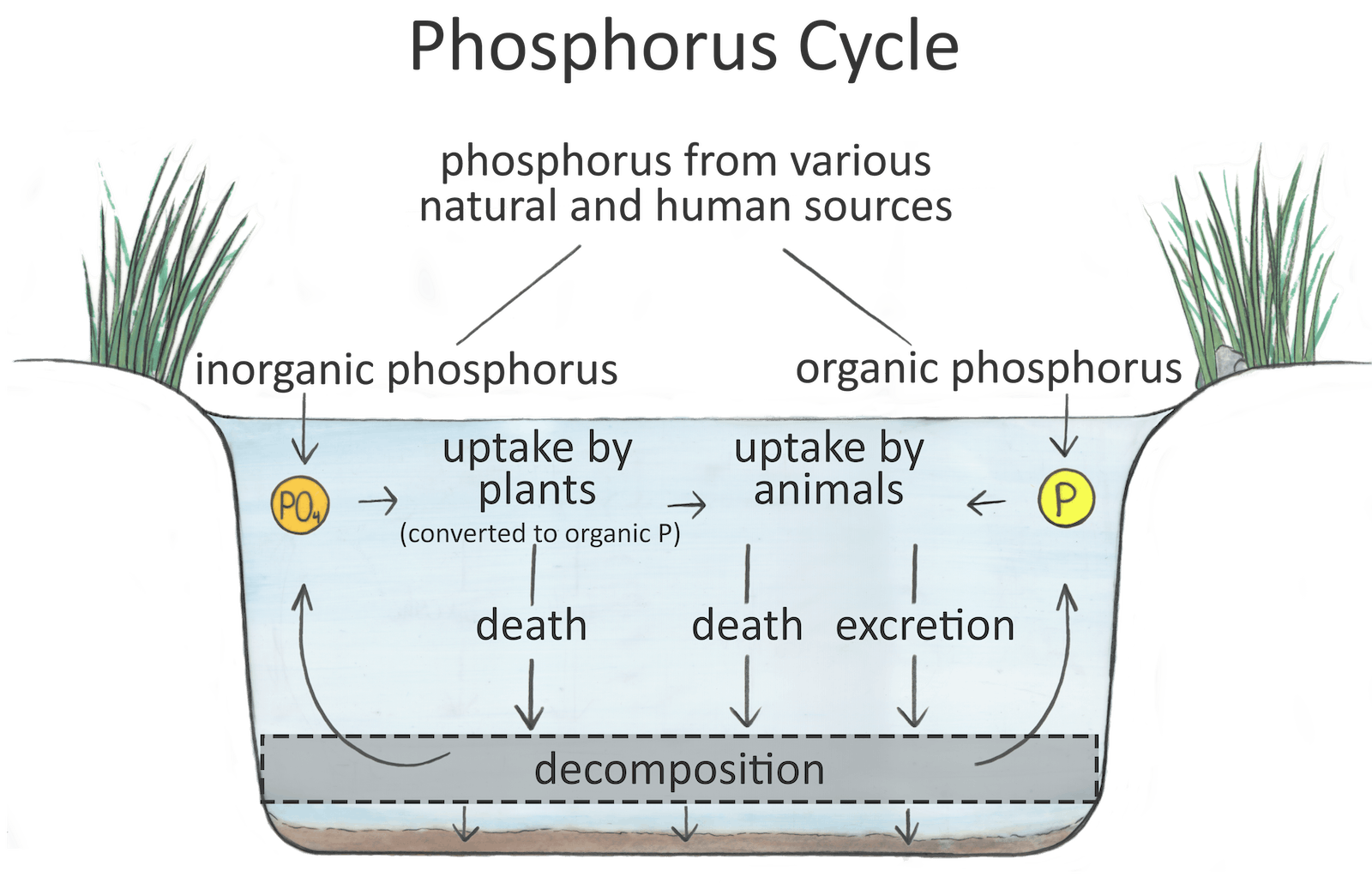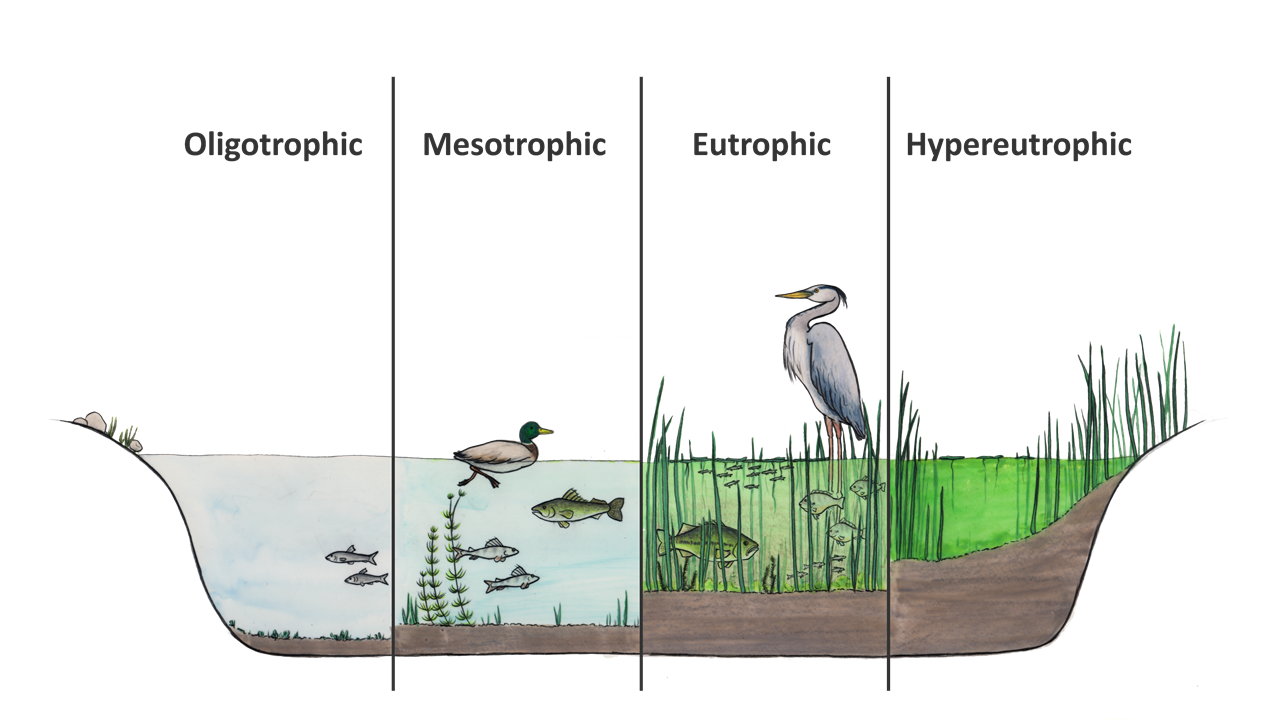The concentration of total phosphorus in most surface waters that are not significantly affected by human activity ranges from about 10-50 µg/L, but this can vary.
What is it?
Phosphorus is an important nutrient for plant growth. In lakes and streams, phosphorus can be dissolved in the water, attached to particles floating in the water and found in the bodies of all living organisms.
Different forms of phosphorus include total phosphorus (a measure which includes all the different forms), orthophosphate (PO4) (also called phosphate) and the related measure soluble reactive phosphorus.
Orthophosphate (or phosphate) is the most bioavailable form of phosphorus, meaning it is most easily used and taken up by organisms that live in the water.
Things like sewage, agricultural runoff and fertilizers can contribute to higher levels of phosphorus in water bodies. Phosphorus can also come from erosion of rocks and soils and from decaying organic material.

Why does it matter?
Algae and aquatic plants need phosphorus to grow. However, there doesn’t need to be a lot of available phosphorus to support normal growth in aquatic ecosystems.
In lakes and streams that receive extra phosphorus, algae and plant growth can increase to the point that it causes problems, like algae blooms, reduced oxygen levels and fish die-offs.
Phosphorus entering a lake may eventually get deposited in the sediments at the bottom. This phosphorus can then get re-released into water for many years to come (referred to as internal loading). For this reason, it can take several years of reducing phosphorus inputs to a lake before we see a reduction in harmful algae blooms.
Phosphorus loading refers to the amount of phosphorus entering a lake or a river over a period of time, like a year. It is important to measure and manage phosphorus loads to ensure that lakes and waterways can function as good habitat for the fish, bugs and other organisms that live there.

Once phosphorus enters a lake or stream it is often contained in a closed loop.
Increased phosphorus loading contributes to eutrophication. Eutrophication happens when a body of water becomes overly enriched with nutrients, often due to runoff from the land. This leads to excessive algae growth, or algae blooms. When bacteria consume decaying algae, they use up oxygen in the water causing low oxygen conditions that are harmful for fish and other aquatic life. Some types of algae (e.g., cyanobacteria, also called blue-green algae) can make people and animals sick if they come into contact with it.

The trophic state of a water body describes the amount of biological productivity in a water body. Eutrophication happens when lakes and rivers become enriched by nutrients which spur plant and algae growth.
How is it measured?
Phosphorus is measured from a water sample sent to the lab. The water sample may or may not be filtered before analysis. This determines, in part, what form of phosphorus is being measured (e.g., particulate phosphorus is that portion of the sample that is held back by a filter) so it is important to record and report this information with the results.
Different forms of phosphorus behave differently and can have different impacts on water quality, so it is important to know what form of phosphorus is being measured.
Some forms of phosphorus can also be estimated using test strips that change colour when placed in the water. The colour is evaluated against a guide to determine the approximate phosphorus concentrations.

Related to phosphorus: total suspended solids (TSS), water colour, iron (iron can join up with phosphorus in the water and cause it to settle in sediment at the bottom).
Phosphorus influences: chlorophyll.